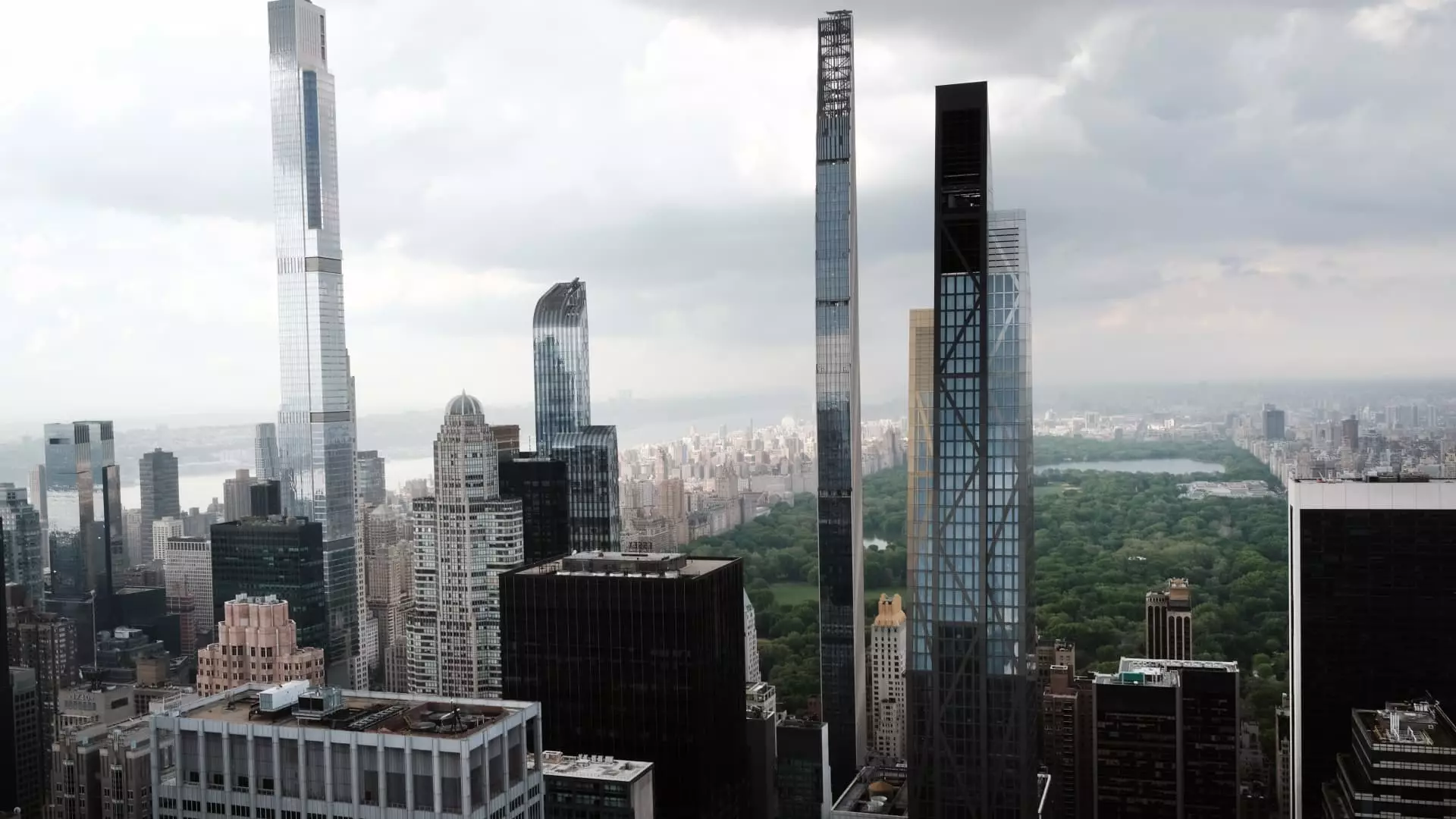The landscape of Manhattan real estate has undergone a remarkable transformation, particularly in the first quarter of this year. Apartment sales surged by an astonishing 29% compared to last year, signaling a reinvigorated interest in the luxury property market driven primarily by the ultra-wealthy. While this may sound like a flourishing success story for real estate agents and investors alike, it is essential to delve deeper into the underlying dynamics at play and the potential pitfalls this trend may hide.
The Allure of Real Estate in a Volatile Economic Climate
Economic volatility has a peculiar way of driving the wealthy towards tangible assets, and recent reports underscore this tendency. With 2,560 Manhattan apartment sales closed in the first quarter, the total value skyrocketed to a staggering $5.7 billion—a 56% increase from the previous year. Although this sounds impressive on the surface, one must question whether this rise is a genuine reflection of a market rebounding or merely a temporary refuge from erratic stock market fluctuations.
Those who can afford luxury properties have increasingly opted for all-cash transactions, which constituted a striking 58% of the sales this quarter. However, this dependence on cash purchases can introduce instability into the market. What happens when economic conditions evolve, and fewer individuals can afford to pay in cash? The future liabilities of market saturation looms, creating a potential bubble waiting to burst, fueled not by demand for living spaces but by anxiety over financial markets.
Disparities Within the Market: The Weak Mid-Sector
While high-end properties have found their stride, the mid-market segment is floundering. Sales have dipped by 10% for apartments priced between $1 million and $3 million, highlighting a troubling divide within Manhattan’s real estate ecosystem. Buyers in this bracket are often more susceptible to prevailing interest rates and economic uncertainty, which can make financing more challenging. The data reveals that while wealth may be centralizing at the ultra-high end, the average buyer finds themselves increasingly excluded.
What does this mean for the future? While affluent buyers can weather economic storms, the erosion of the mid-market signals a shrinking pool for potential homeowners. These shifts could lead to an imbalance where only the privileged can secure desirable properties, narrowing the city’s economic demographic.
The Boomerang Effect: Returning Affluence
One interesting phenomenon worth noting is the “boomerang wealthy.” This group includes affluent individuals who migrated to states like Florida for tax benefits or enhanced quality of life during the pandemic, only to realize that their roots—and wealth—are firmly entrenched in Manhattan. The emergence of this trend emphasizes a specific craving for urban living that can’t be easily replicated elsewhere. Broker Charlie Attias notes a noticeable uptick in buyers returning from sunny climates as they recognize the unmatched allure of New York City.
Yet, one has to wonder about the long-term sustainability of this trend. Will these “boomerang buyers” nourish the economy with fresh investments, or will they unintentionally exacerbate the wealth gap by driving up property prices beyond the reach of average citizens? The narrative that rich individuals are coming back is not wholly positive; it may reflect a broader trend of exclusion and elitism, rather than rejuvenation for all New Yorkers.
Generational Wealth: The New Norm
Consider the impact of the “great wealth transfer,” where trillions of dollars are expected to change hands from baby boomers to their offspring. This is not just about increased sales figures; it underscores a growing divide between generations that possess the means to invest in high-value properties and those who do not. The real estate market’s buoyancy can hardly be celebrated when the fundamental issue of wealth inequality persists.
Real estate agent Cindy Scholz highlights how family offices are increasingly acquiring properties as long-term investments, suggesting that the affluent are securing their legacies at an alarming rate. This increased market presence can distort property values even further. As wealth becomes increasingly concentrated among a small fraction of the population, one must question the implications for society as a whole.
In times of shifting political landscapes and economic expectations, it’s vital to scrutinize not just the numbers but the ethical considerations surrounding them. Manhattan’s luxury real estate market may be thriving now, but in the grander picture, it poses grave challenges regarding who gets to call the city home and at what cost. The allure of high-end properties may shine brightly, but that glow masks deeper societal rifts and a future fraught with uncertainties.

